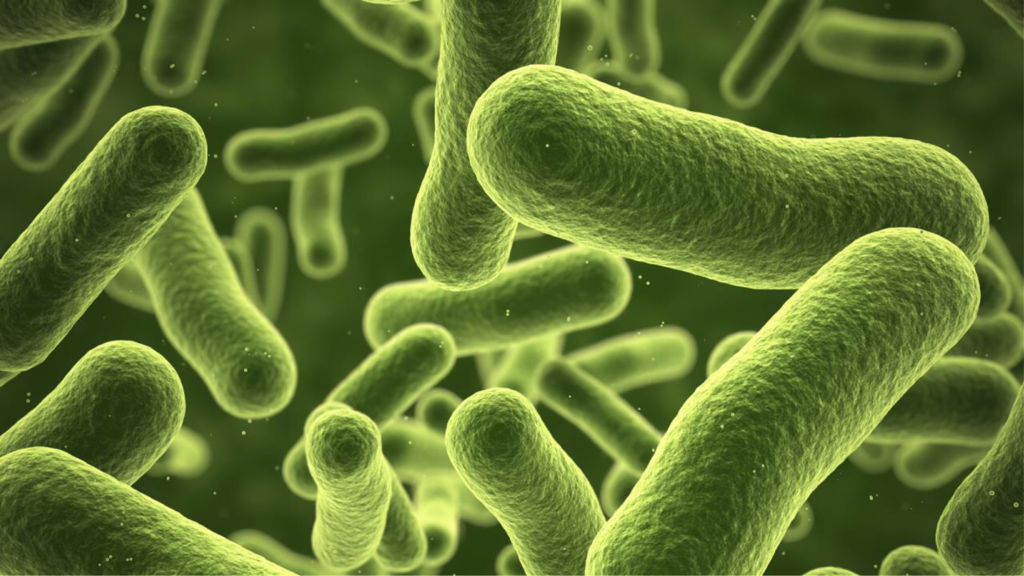The Future of Menopause
What is Menopause
Menopause is the final menstrual period. It is confirmed after women stop menstruating for 12 months. Natural menopause occurs between ages 40 to 58 years. Average age of menopause is age 51 years. Some women have their menopause early, before age 45 years. Menopause happening after age 54 years is said to be late.
Induced Menopause
Removal of both ovaries, usually at the time of a hysterectomy (removal of the womb) is the most common cause of induced menopause. Other causes include damage to both ovaries with chemotherapy, radiation to the pelvis.
Premature Menopause
Women experiencing menopause before age 40 are said to have premature menopause. Periods sometimes return in women with Primary Ovarian Insufficiency (POI) – a condition where young women do not have menstrual periods as a result of failure of the ovaries to produce hormones necessary for menstruation to happen.
A considerable part of women’s lives will be spent with low levels of estrogen. As a consequence of this symptoms such as hot flashes, night sweats, mood swings often affect quality of life for women.
The ability to cope with the change of life may not be easy. For the most part women are able to manage their symptoms.
Menopause, an important milestone, is an opportunity for women to take better care of our health. We must take charge of our lives. It is never too late to start.
Laying the Foundation for Menopause Research

As early as the 1960’s Professor Wulf Utian my friend and mentor recognized the urgent need for research into the nature of menopause.
He noted the need for further studies to discover methods to relieve symptoms, understand osteoporosis (brittle bone disease), blood vessel changes from sudden withdrawal of hormones (after removal of both ovaries).
Dr. Utian started the first Menopause Research Center at Groote Schuur Hospital University of Cape Town South Africa. He founded The North American Menopause Society (NAMS) and co-founded the International Menopause Society.
The History of Hormones which he presented at the 2019 NAMS 30th Anniversary meeting in Chicago Illinois, took us on his personal journey while researching menopause.
Identifying estrogen in 1929 resulted in women being better able to manage common menopausal concerns such as hot flashes, night sweats, vaginal dryness. Some advocated that women could remain feminine forever. The role of Progestin in the 1970’s was recognized.
The Estrogen plus Progestogen (E+P) arm of the Women’s Initiative (WHI) Study was stopped early in 2002. Many women discontinued using hormone therapy to manage their menopause symptoms as a result of the published findings.
The Importance of Building on Past Achievements

I received the gift of a gold-weight in the form of Sankofa while visiting Ghana West Africa. An Adinkra symbol of the Ashanti people, it is represented by a bird looking behind. In essence it symbolizes that if you don’t know where you are coming from you don’t know where you are going. Knowledge that you have gained in the past will help to guide you into the future to achieve progress – “go back to the past and bring forward that which is useful”.
Professor Wulf Utian – Menopause Research Pioneer and Trailblazer
As a pioneer and trail blazer in Menopause research Dr. Utian laid the foundation for future research to build on work in menopause, hormone therapy and osteoporosis.
He said to me years ago that when he presented a paper on Menopause at a medical conference many years ago, about 6 people attended. One person came to genuinely hear what he had to say and the rest came to laugh.
Here we are today, building on the work he started so many years ago.
Making Menopause Mainstream – Building on the Foundation
Making Menopause Mainstream, the theme of the 2019 North American Menopause Society Meeting for the most part discussed how changes in menopause affected women’s health.
Of equal importance is the understanding of what happens during the time around the menopause (perimenopause). In the final analysis managing a healthy menopause transition is our goal. This includes achieving a healthy active lifestyle, prevention and screening for disease.
Effects of Menopause
Estrogen levels go up and down during the period approaching menopause. Sometimes levels are very high, sometimes they are very low. Consequently, women experience more hot flashes, night sweats, sleep problems, mood disorders. Difficulty remembering things can be distressing.
Untreated vaginal dryness gets worse as estrogen levels fall even lower. Resulting pain with intercourse, low libido can have a negative impact on women and their partners.
Bone loss particularly in the spine increases in the 5-7 years approaching menopause. Bones become thin and weak (osteoporosis). They break easily as we get older.
We tend to have more body fat particularly around the waist. Belly fat is not good. The possibility of developing diabetes increases when this happens.
Menopause Management
Hormone therapy is approved by the Food and Drug Administration (FDA) for treating moderate to severe hot flashes / night sweats. This works very well for symptom relief, results in better sleep and a better quality of life. Women who have their womb removed do not need to take progesterone. It is recommended for women with a uterus to decrease thickness of the lining
Estrogen helps vaginal dryness. Bone loss is reduced. The FDA approved Estrogen for postmenopausal osteoporosis prevention.
There are some women who are unable to take hormone therapy for symptom relief. It is not recommended for women who had a blood clot, stroke, have heart disease, breast cancer, active liver disease. It is important to treat each woman based on what she wants to achieve when managing her symptoms. Benefits of treatment with hormone therapy should be weighed against risks.
Risks are rare when hormone therapy is started before age 60 years or within 10 years of menopause.
Treatments without hormones are available for women who are unable to or who do not want to take hormone therapy.
What About the Future of Menopause?
For me, menopause, an important event along the journey of women’s lives should be celebrated. The question I ask is where do we go from here?
Attitudes towards menopause depend on how comfortable women feel talking about their symptoms. Menopause is associated with aging. Women who delay childbearing to pursue their career may have concerns about their biological clock running out.
Heart disease the number one killer of women increases after menopause. High blood pressure, a risk factor for stroke, other chronic diseases of aging also increase.
What Can We Do?

We can take this opportunity to look at our health, our lifestyle. Consider changes we can make at this time to allow us to live the rest of our lives as healthy as possible while reducing disability.
Predicting Menopause
Is it possible to know when menopause will occur? It turns out that the FDA approved the first blood test to help determine menopause. It predicts the onset of menopause within 5 years.
Women are born with thousands of follicles in our ovaries. A follicle is a sac filled with fluid where immature eggs are found. A number of follicles grow during the first half of our menstrual cycle. One follicle eventually matures. The egg is shed from that mature follicle at the time of ovulation.
As we age the number of follicles decreases significantly. Not a lot of follicles remain in our ovaries when we approach menopause.
Anti-Mullerian Hormone (AMH)
AMH is produced by cells in the ovaries. This hormone limits the number of growing follicles. Measuring AMH levels in the blood helps us understand how many follicles remain. Most notably, when we can expect the period to stop.
Planning for Menopause
African American and Hispanic women tend to enter the menopause transition early. They usually have more symptoms which get worse and last for a longer period of time. Risk of heart disease increases when hot flashes start early.
Having information as to when to expect the final period helps us plan not only how to better manage symptoms early but also take steps to
• lower risk for osteoporosis, broken bones, heart disease, heart attacks
• Decide when birth control is no longer needed
• Improve quality of life
The New Frontier: Averting Menopause at 22 in Children who Survive Cancer Treatment
Dr. Theresa Woodruff delivered the Wulf Utian Endowed Lecture at the 2019 NAMS meeting. According to Dr. Woodruff more children are surviving cancer treatment. Various techniques to preserve their ability to have children were discussed such as:
• Egg bank
• Embryo bank
• Cryopreservation of tissue (freezing tissue) to preserve their function
• Extracellular ovulation (having ovulation happen outside of the body – in a lab)
• Making 3D functional tissues like artificial ovary, soft tissue prosthetics (creating artificial body parts)
There are legal, ethical and religious concerns.
Dr. Virginia Miller spoke about exploring the role genes may play in determining how estrogen is utilized in the body.
Breast Cancer Detection
Less women are dying from breast cancer, the most common cancer in women. BRCA 1 and BRCA 2 are the most common gene mutations associated with increased breast cancer risk.
As more breast cancer genes are recognized, it’s recommended that women who had genetic testing for breast cancer before fall 2013 be retested.
Breast Cancer Treatment
Tests looking at the pattern of a number of genes are available. Gene testing helps us determine if chemotherapy is necessary after surgery for breast cancer. Women who had chemotherapy may consider testing to determine if further treatment with chemotherapy is necessary.
Colorectal Cancer Screening
Colonoscopy is the gold standard. Recommendation is to start screening at age 45-50 – screening at an earlier age if risk is increased (family history of colorectal cancer or adenomatous polyps). Women at risk for adenomatous polyposis (multiple polys in the large bowel) should consider genetic counseling.
Early detection for cancer by testing for DNA / blood in a stool sample – Fecal Immunochemical Test (FIT) DNA is recommended every year. No special preparation is required.
Osteoporosis

Osteoporosis is known as “the silent robber” – bones break down releasing calcium faster than bones can be made. Women are living many years of their lives with low estrogen levels increasing their risk for osteoporosis.
At age 80 years we lose about 30% of our bone mass. Hip fractures can be life threatening in older postmenopausal women. Disability from broken bones affects our ability to move around, do chores and other daily activities. It is very expensive to treat these fractures.
Bone Density Testing
DEXA Scan should be done on all postmenopausal women age 65 years and older. Other causes of bone loss should be assessed. Younger postmenopausal women at risk (weight under 127 pounds, personal or family history of fracture) should be tested. DEXA gives information about bone density, how much bone is lost. Fracture risk assessment tools such as FRAX are useful in helping us decide if treatment is necessary based on a 10-year risk of having an osteoporotic fracture.
Osteoporosis Treatment
Determination for treatment is based on risks for fracture and not simply on the result of low bone density. Dr. Michael McClung at the 2019 NAMS meeting emphasized the importance of having a strategy for long-term treatment for each individual.
Breast cancer survivors are at an increased risk for fracture. The WHI study revealed that spine and hip fractures increased 2 years after stopping hormone therapy. We should think of the consequences to the skeleton.
Gut Microbiomes – Our Neighbors and Friends

There are trillions of bacteria and other organisms living inside our bodies. A stunning revelation. You might ask, why on earth are they there? In short order, we give them a home. In return they live in balance with our immune system. They help to keep us healthy.
Professor Jack Gilbert who presented at the 2019 NAMS meeting informed us that gut bacteria break down food and produce substances important for brain development, mood, behavior.
Research is currently being done by America Gut Project and other organizations around the world to discover what role our Gut microbes play in determining whether we are healthy or not. Projects are looking at the effects of lifestyle and diet on these organisms.
Each individual has their own microbiome that is unique to them. Testing for gut microbiome is available. The objective is to develop new techniques for diagnosing and new methods for treating diseases.
Increasing Gut Microbiomes
Eating a wider variety of fruits, vegetables, whole grains promote the growth of healthy gut bacteria. Disease prevention, better health outcomes, antibiotic resistant genes are reduced.
At the end of the day having a healthy transition into the next chapter of our life depends on our knowledge and attitude about menopause. How to prepare for and manage the process is what we want to achieve.
Lifestyle

Moving more a.k.a. exercise, managing stress, family, friends and taking time to smell the flowers are all part of the process of achieving a healthy active lifestyle as we age.
“There comes a time when the mind takes a higher plane of knowledge but can never prove how it got there” ……Albert Einstein
